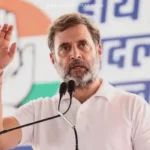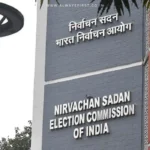
News Summary:
- The third and final phase of Jammu and Kashmir’s assembly elections recorded a remarkable 65.48% voter turnout, the highest among all three phases.
- Voting was held across 40 assembly constituencies, including key districts in both Jammu and Kashmir divisions, marking a crucial phase for government formation.
- Historic participation from the Balmiki community and West Pakistan refugees, who voted for the first time in 77 years, added to the significance of this election.
Why was the third phase of the J&K elections so important?
The third phase of the Jammu and Kashmir assembly elections was crucial as it saw the highest voter turnout of 65.48%, with polling extending across 40 assembly constituencies. This phase holds particular importance because it involved the highest number of seats compared to the previous two phases, which saw 57.31% and 61.38% voter turnout respectively. With 39,18,220 eligible voters and prominent political figures in the fray, this phase is considered pivotal in determining the formation of the next government.
What made this phase unique was the first-time participation of the Balmiki community and West Pakistan refugees, who were granted voting rights in J&K’s assembly elections after the abrogation of Article 370. Their turnout was significantly high, especially in constituencies along the International Border with Pakistan and the Line of Control (LoC).
Who are the key candidates and what are the major stakes?
Among the 415 candidates, several prominent figures were contesting, including former Deputy Chief Minister Muzaffar Hussain Beg, former ministers like Sajjad Lone, Ghulam Hassan Mir, and Syed Basharat Bukhari from major political parties such as the National Conference (NC), People’s Democratic Party (PDP), and the People’s Conference. In the Jammu division, heavyweights like former deputy chief ministers Tara Chand and Mula Ram, along with senior politicians from BJP, were vying for key seats.
Jammu’s Chhamb constituency saw the highest polling percentage at 77.35%, reflecting the strong engagement of voters. The overall voter turnout was particularly high in constituencies located near the Pakistan border, while polling stations in Jammu city experienced slower participation in the early hours.
Conclusion:
The final phase of the Jammu and Kashmir elections not only broke turnout records but also marked a historic moment for communities voting for the first time. The results from this phase will play a decisive role in shaping the region’s political future. With several key political figures in contention, the stakes are high, and all eyes are on the upcoming vote counts. This phase will ultimately determine the leadership that will steer Jammu and Kashmir forward after a decade-long gap in assembly elections.








































Leave a Reply